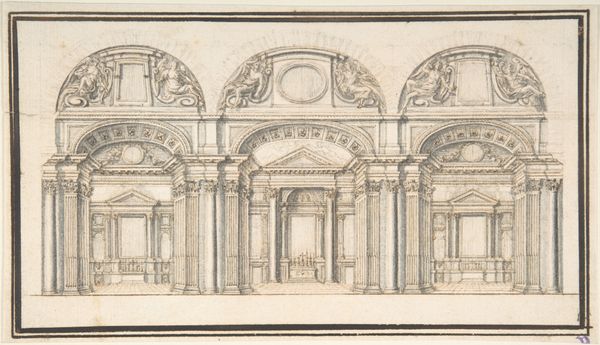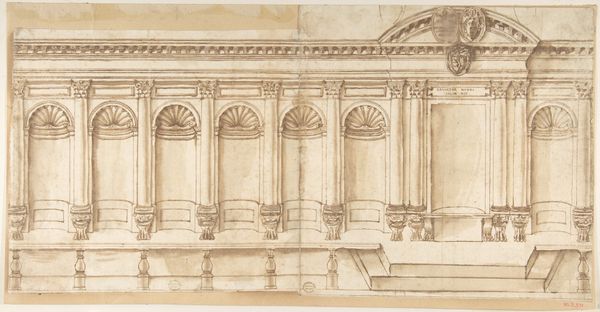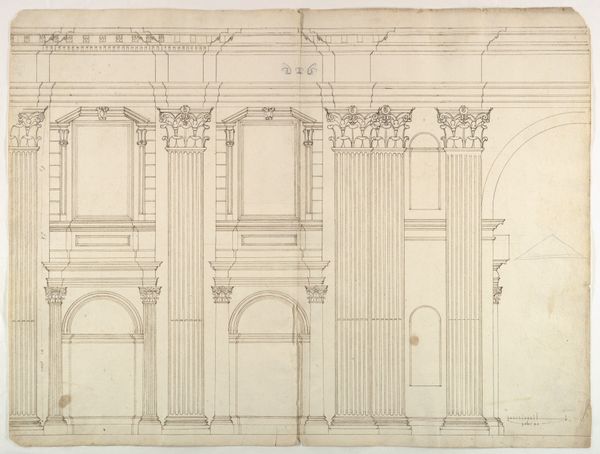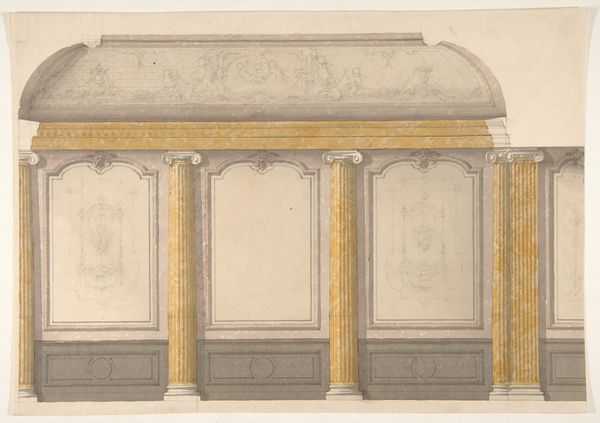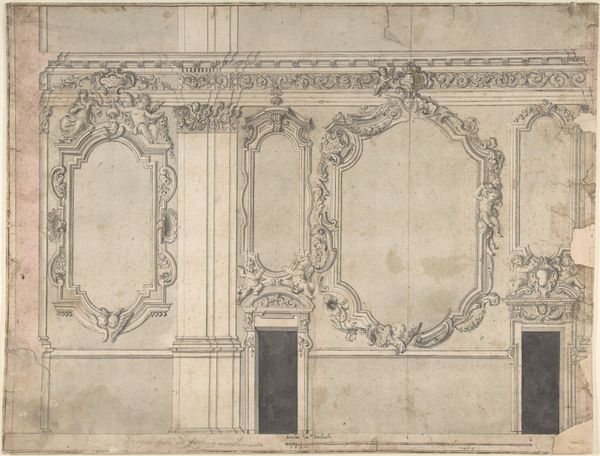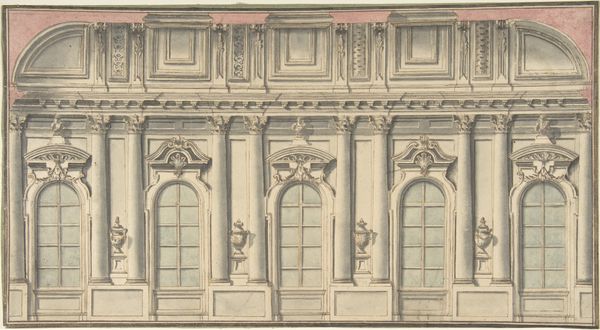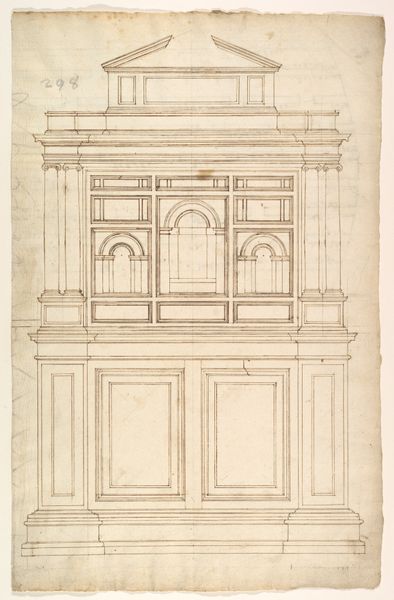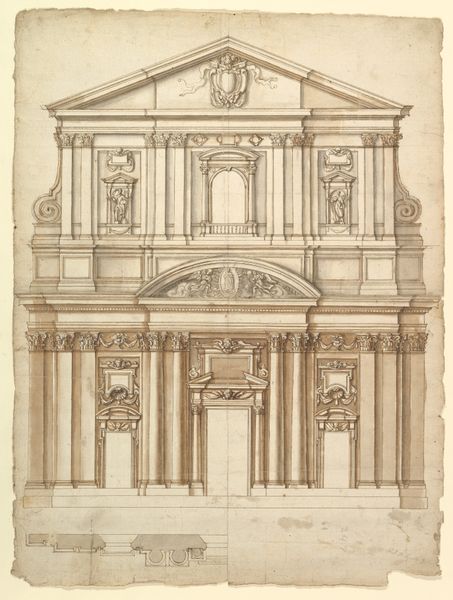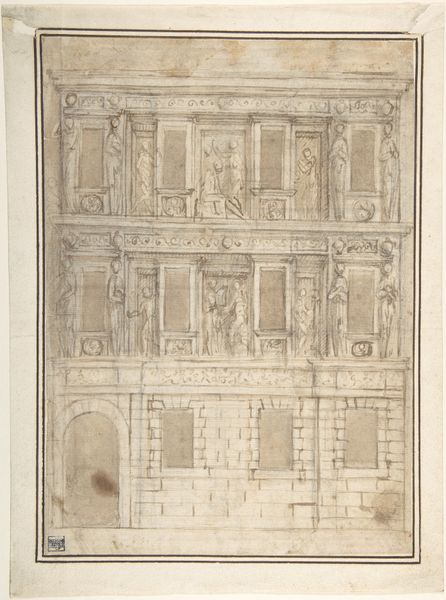
drawing, print, architecture
#
drawing
# print
#
form
#
11_renaissance
#
column
#
arch
#
line
#
architecture
#
realism
Dimensions: sheet: 5 7/8 x 9 1/4 in. (15 x 23.5 cm)
Copyright: Public Domain
Curator: It's a fascinating piece, isn’t it? This drawing, dating from between 1550 and 1599, is a "Design for a Facade (unfinished)," currently residing at the Metropolitan Museum of Art. It's rendered as a drawing and print, and attributed to an anonymous artist. Editor: Striking in its rigid precision, I must say! There is something haunting in how the stark lines carve out space in this design that ultimately was never completed. Curator: Indeed, its unfinished nature begs us to consider what statements this kind of architecture made and for whom it spoke. These facades—designed for a certain class, to embody particular values—the question of whether or not this statement got made takes on different tones when one knows it never saw completion. The social implications! Editor: If you allow me, the relationships created via positive and negative space are masterful, whether this building project materialized or not. There is a complex order achieved from the repetitive arches and columns, not just horizontally but vertically as well. And it's this balance of horizontal and vertical extensions that evokes the intended grander of Renaissance art. Curator: This facade also echoes how architectural design intertwines with notions of power during the Renaissance. Those who commissioned structures such as these often sought to reflect their authority through visual grandeur. A structure like this becomes part of a wider conversation, doesn't it? A way of announcing privilege, control... It touches the historical, gendered, raced nature of power and inequality. Editor: Of course. But what I am finding captivating about this piece—outside of it existing simply as a concept—is in how its visual components can evoke a sense of monumentality through its calculated structure. One simply has to analyze the arrangement of forms and its use of line. Even in its state as a concept drawing, its lines suggest great visual depth that can inspire an understanding of harmonic perfection that was explored by Renaissance art. Curator: Thank you. I have enjoyed discussing the different angles this offers; whether it be dissecting how visuality reproduces cultural ideologies to dissecting line! Editor: Absolutely, it's always refreshing to reflect on an artwork like this that highlights not only what has survived, but its design and what statements a line might suggest even when isolated!
Comments
No comments
Be the first to comment and join the conversation on the ultimate creative platform.
